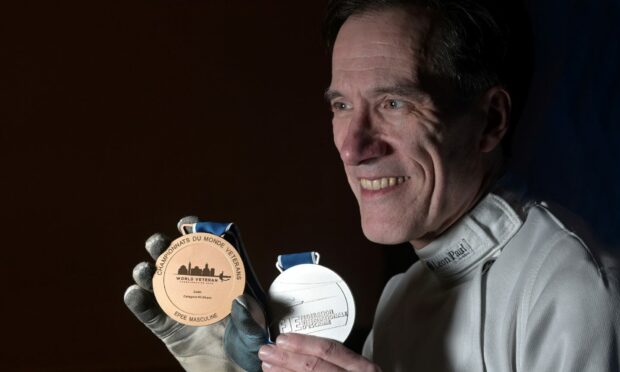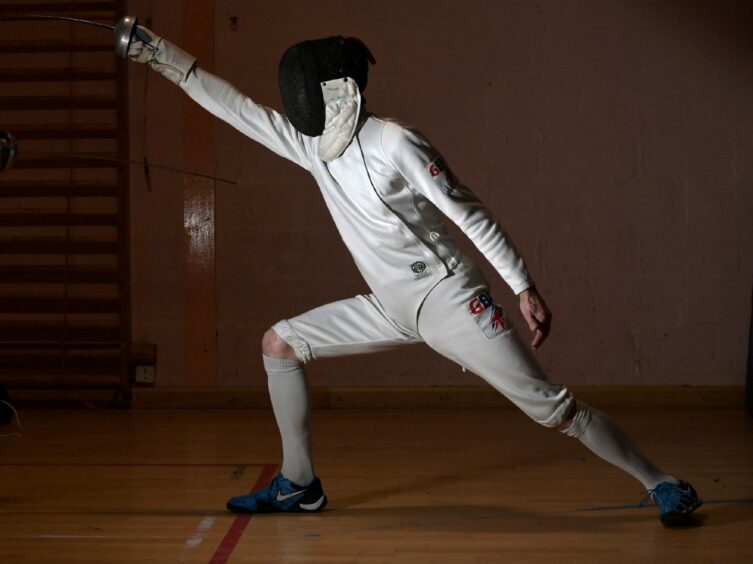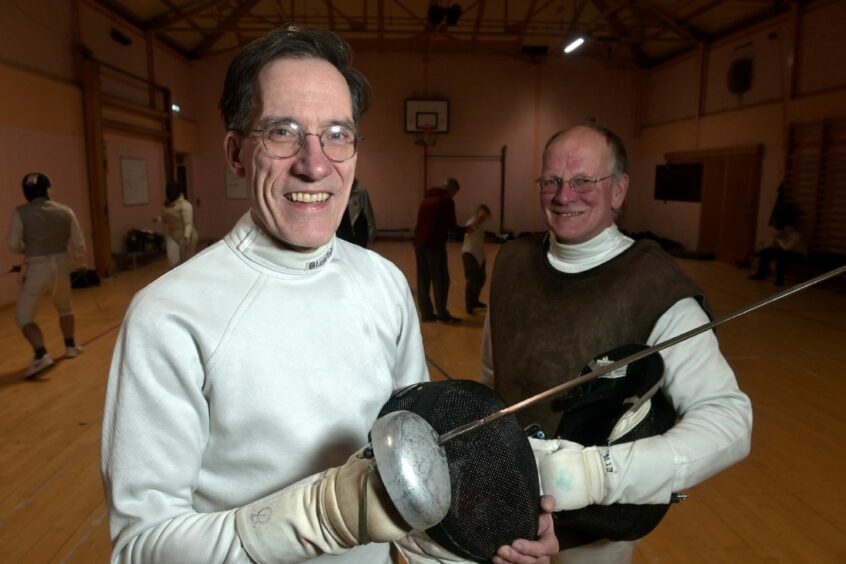Inverness-based fencer Hugh Kernohan has high hopes of being a world champion – after winning two World Veterans’ Championship medals this winter.
The 64-year-old, who hails from Glasgow, competed in the combat sport alongside a career largely based in London with the Ministry of Defence.
He began fencing as a 12-year-old in 1971 in Edinburgh, working his way through the Scottish schools, junior and British under-20 ranks to compete for Scotland seniors in 1980 and the British team five years later.
Kernohan fenced in two World Championships, with 19th in 1985 being his best result, and was also one of two GB epeeists in the 1988 Olympics in Seoul. He was British epee champion in 1989.
He retired from international competition after Seoul and didn’t fence between 1992 and 2012.
However, a fresh focus in retirement has given him new targets in his beloved sport.
Out-witting rivals is name of game
Epee has always been his chosen weapon, which is the most tactical, in comparison to foil or sabre.
And he explained why that’s still the right one for him as he chases down prizes. He said: “In epee, there is a real trade-off between getting slower and getting smarter.
“As a combat sport, fencing isn’t about absolute or peak physical performance, but about out-witting the opponent who turns up at the other end of the piste.”
It’s now eight years since Kernohan retired from his career in London and he’s now more than holding his own having burst on to the veterans’ stage.
In October, he earned a bronze medal in the World Veterans’ Championship in Zadar, Croatia, then was a whisker away from helping Britain win gold in the team event.
Tough call led to narrow final loss
That silver success fills Kernohan with mixed emotions as he says his decision not to fight in the final, having done so in earlier rounds, might well have been costly as Italy edged to a 27-23 triumph.
He said: “I was captaining the team. You have two fencers in each age category and only one of them fences. You can make a substitution, but essentially only one fences per category.
“In the final, I didn’t fence and I put the other fencer in instead, another Olympian and an old friend of mine called Neal Mallett.
“We had a good team this year and we led the Italians. We have a very strong newcomer called Greg Allen who has just moved into the 50s category, and he’s made a big difference to our team. He’s a former British senior international and is still very competitive in the open circuit.
“He was in his first Veterans’ World Championship and he was disappointed with how he did in the individual competition but played a blinder in the teams.
“We led the Italians until 90 seconds from the end. It’s a relay and it goes up to 30 hits overall. You can fall behind and you can come back.
“Neal had a three-hit lead going into the final leg and he couldn’t quite hold on to it. Neal was devastated.
“We came away wondering whether I should have made that substitution. It was hard, but who knows?
“Had we signed up for a silver medal before the Championship, we’d have said yes, but it was bittersweet, because we had our hands on the world title as a team and we let it slip.”
Bronze medal bolstered belief
Kernohan already had a bronze in the bag from the individual section, with only a battling 10-6 defeat against former veteran world champion, Volodymyr Sokolov from Ukraine preventing further progress.
However, performing to such high standards against global rivals offers belief for Kernohan that he can go one better this year in Florida.
He said: “I took the bronze medal from the individual section, which was the first world championship medal I’d won. It reinforced my sense I could do this.
“From my earlier fencing career, I had an unfulfilled ambition, which was to stand on the podium with the flag in the air and the anthem playing. I never managed that earlier on. I don’t mind where it is or whether it’s the union flag or the saltire.
“When I began in veterans’ fencing, I knew I hadn’t achieved that and knew I could do it.
“My ambition now is to be the world champion in my 60-69 year age category.
“I go to these competitions now and realise my competitors look at me and are scared. When I walk into the hall, people can say ‘Hugh’s here’.
“You know your own weaknesses, but you must remember other people are thinking the same thing.”
Local and London training mixture
And it’s a mixture of preparation at home and in London which keeps him in peak shape for competition.
He is coached by his good friend Alasdair Urquhart, who teaches the sport to all ages at Culloden Leisure Centre within Culloden Academy and at a nearby church hall.
When competitions come closer, Kernohan heads to London, where his two daughters live, and goes to a club where he gets more variety in terms of the type of fencer he can tussle with and daily lessons with a top-flight Romanian coach, Oana Puiu.
He said: “You work with a coach on individual lessons for at least half an hour. One-on-one is simply the best way for training, and you mix it with sparring in the club, which is also necessary. Sparring complements, rather than replaces, working with a coach.
“When I come to London, it means I can fence with high quality opponents and it’s high intensity and that’s of great benefit to me.”




Conversation